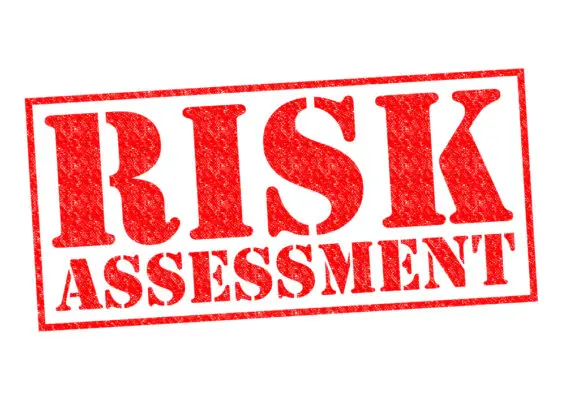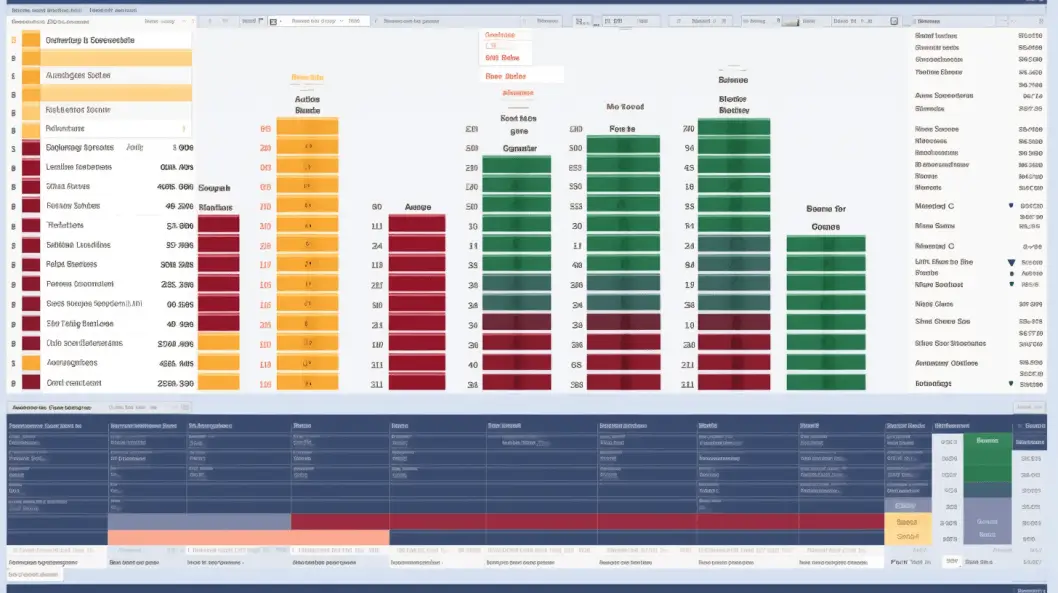The General Data Protection Regulation (GDPR) is a comprehensive data protection law that aims to safeguard the privacy rights of individuals within the European Union (EU).
As organizations strive to comply with GDPR, effective risk assessment processes become crucial in identifying and mitigating potential data protection risks.
This article explores the use of GDPR risk assessment template XLS, a structured approach to assess and manage GDPR-related risks.
The article begins by defining the purpose and scope of a GDPR risk assessment template XLS, highlighting its role in facilitating compliance efforts.
It then delves into the preparation phase, outlining key steps and considerations for organizations to undertake before conducting the risk assessment.
Subsequently, the article discusses the GDPR risk assessment process, providing an analytical overview of the steps involved.

What is a GDPR Risk Assessment Template XLS?
A GDPR Risk Assessment Template XLS is a tool used to evaluate and identify potential risks to the protection of personal data within an organization.
One of the key benefits of using this template is its ability to provide a structured and systematic approach to conducting a risk assessment.
Organizations can utilise the template to ensure consistency and accuracy in their assessment process and save time and effort by following a pre-designed format.
Benefits of Using a GDPR Risk Assessment Template XLS
Utilizing a GDPR Risk Assessment Template XLS can provide organizations with a structured framework to evaluate and mitigate potential risks related to data protection, facilitating compliance with the GDPR regulations systematically and efficiently. This template offers several benefits:
- Identification of risks: The template prompts organizations to identify and assess risks associated with their data processing operations, helping them to gain a comprehensive understanding of potential privacy risks.
- Compliance with GDPR requirements: By using the template, organizations can ensure that they adhere to the GDPR’s requirements for conducting a data protection impact assessment and implementing appropriate measures to protect personal data.
- Streamlined assessment process: The template provides a standardized format for evaluating the severity and likelihood of various risks, enabling organizations to prioritize their efforts in addressing the most significant threats.
- Enhanced data protection measures: Through the template, organizations can establish procedures and safeguards to minimize the likelihood of data breaches and protect individuals’ privacy rights.
- Documentation of consent: The template allows organizations to document and track individuals’ consent for processing their personal data, ensuring compliance with the GDPR’s consent requirements.
Utilizing a GDPR Risk Assessment Template XLS can assist organizations in effectively managing risks, ensuring compliance with regulations, and enhancing their data protection measures.
Preparation for the GDPR Risk Assessment
Several key points must be considered in preparation for the GDPR risk assessment.
Firstly, collecting information and data is crucial for identifying potential risks and vulnerabilities.
Secondly, it is important to understand the types of processing operations involved to assess the risk associated with each operation.
Additionally, identifying natural persons involved in processing activities is essential for determining the impact on individuals and their rights.
Furthermore, assessing the level of protection needed for personal data is crucial to ensure compliance with GDPR requirements.
Lastly, implementing privacy by design principles is necessary to incorporate data protection measures from the beginning of any processing activity.
Collecting Information and Data
Collecting information and data requires careful consideration of privacy and security measures to ensure compliance with GDPR regulations. When conducting a GDPR risk assessment, gathering comprehensive and accurate information about the organization’s processing activities and the personal data being collected, stored, and processed is essential.
This can be done by reviewing existing documentation, such as data inventories and flow diagrams, and conducting interviews or surveys with relevant stakeholders. The collected information should cover all aspects of data processing, including the purposes, categories of personal data, data recipients, and retention periods.
Additionally, it is important to identify potential risks associated with the processing activities and assign appropriate risk levels and scores. This information will serve as a foundation for the subsequent steps in the risk assessment process.
Understanding Types of Processing Operations
Different processing operations, such as data storage, data sharing, and data deletion, play a crucial role in understanding how personal data is handled within an organization.
These operations involve various activities that involve the collection, recording, organization, structuring, storage, adaptation, alteration, retrieval, consultation, use, disclosure, dissemination, alignment, combination, restriction, erasure, or destruction of personal data.
To provide a comprehensive understanding of the types of processing operations, it is helpful to categorize them into two main sub-lists:
- Operational processing activities:
- Data storage: involves the physical or digital storage of personal data in articles, documents, or tools.
- Data sharing includes transferring personal data to third parties or across different systems or jurisdictions.
- Technical processing activities:
- Data deletion: refers to the removal or erasure of personal data from databases, software, or products.
- The level of protection pertains to implementing security measures to safeguard personal data during processing operations.
Understanding these types of processing operations is crucial for organizations to ensure compliance with GDPR and to protect the rights and privacy of natural persons.
Identifying Natural Persons Involved in Processing Activities
Identifying the natural persons involved in processing activities is crucial in ensuring accountability and transparency within organizations handling personal data.
This process involves understanding the individuals responsible for collecting, storing, and processing the data.
Identifying these individuals, organizations can effectively implement data protection processes and assess the risks associated with their activities.
This can be done through various risk identification techniques, such as conducting risk assessment guidelines, maintaining risk registers, and creating a risk profile.
Understanding the natural persons involved in processing activities, organizations can better evaluate the potential risks to customer data and develop a comprehensive risk treatment plan.
Organizations should also consider conducting third-party risk assessments and utilizing a third-party risk management platform to mitigate potential risks further.
Identifying the individuals involved in processing activities is a crucial aspect of any type of risk assessment.

Assessing the Level of Protection Needed
To ensure adequate protection of personal data, it is essential to evaluate the level of safeguards required based on the sensitivity and potential harm that could result from unauthorized access or disclosure.
The assessment of the level of protection needed involves considering various factors. Firstly, organizational measures such as encryption, access controls, and data minimization should be implemented to reduce risks.
Secondly, a risk acceptance score can be assigned to determine the level of risk the organization is willing to tolerate.
Lastly, external risks, such as cyber-attacks or data breaches, should be considered. This can be achieved through risk identification, third-party risk management, and the operational risk management process.
Organizations can effectively mitigate the maximum risk score by thoroughly assessing potential risks and assigning a risk owner.
Implementing Privacy by Design Principles
One effective approach to ensuring privacy protection is implementing Privacy by Design principles. This systematic description emphasizes the importance of incorporating privacy measures into the initial design of systems and processes rather than as an afterthought.
Considering privacy from the outset, organizations can proactively address GDPR third-party risk requirements and mitigate potential risks to data protection. Protection by design involves implementing robust security measures, such as encryption and access controls, to safeguard personal data.
Additionally, organizations must assess broader data protection impacts, including the protection of minors and the potential risks associated with data protection processes.
Establishing third-party data protection controls and maintaining compliance with the GDPR through a compliance checklist template is also important. This holistic approach to privacy ensures that individuals’ personal information is adequately protected throughout its lifecycle.
| Privacy by Design Principles | Description |
|---|---|
| Proactive approach | Incorporating privacy measures from the outset |
| Robust security measures | Implementing encryption and access controls |
| Broader data protection impacts | Assessing protection for minors and potential risks |
| Third-party data protection controls | Establishing controls for external partners |
| Compliance checklist template | Maintaining GDPR compliance |
Conducting the GDPR Risk Assessment
This focuses on the key points of conducting the GDPR risk assessment.
The first step involves establishing an annual turnover threshold for organizations within the scope of the GDPR regulation.
Next, it is important to define systematic descriptions for processing operations. This includes identifying the types of personal data being processed, the purposes of the processing, the categories of data subjects, and any data recipients.
Quantifying risks with maximum risk score estimates is another crucial step. This involves assessing the likelihood and potential impact of each risk identified during the assessment process.
Determining acceptance levels for each identified risk is also important. This involves setting thresholds for acceptable levels of risk and determining which risks can be tolerated and which need to be mitigated.
Finally, developing a final risk management plan is necessary. This plan outlines the actions that will be taken to manage and mitigate the identified risks.
These steps are crucial in assessing the potential risks and vulnerabilities that organizations may face in relation to GDPR compliance. They provide a systematic approach to effectively identifying, analyzing, and managing these risks.
Establishing an Annual Turnover Threshold for Organizations Within Scope of the GDPR Regulation
To determine the applicability of the GDPR regulation to organizations, an important factor to consider is establishing an annual turnover threshold. This threshold serves as a benchmark for determining whether an organization falls within the scope of the GDPR.
Here are three key points regarding the establishment of an annual turnover threshold:
- Regulatory Compliance Purposes: The annual turnover threshold provides a practical basis for organizations to assess their obligations under the GDPR. It helps determine the compliance efforts required to adhere to the privacy law.
- Basis for Processing Data: The annual turnover threshold is also crucial in determining the lawful processing activity of an organization. It helps identify whether an organization handles significant personal data and thus falls within the regulatory framework.
- Nature of Processing: The annual turnover threshold assists in evaluating the nature of an organization’s data processing activities. It helps ascertain whether an organization engages in activities that warrant compliance with the GDPR, such as processing sensitive personal data or conducting large-scale data processing operations.
Defining Systematic Descriptions for Processing Operations
Defining systematic descriptions for processing operations provides organizations with a comprehensive framework for documenting and analyzing their data processing activities in a structured and organized manner, enabling a more efficient and transparent approach to compliance with the GDPR regulation.
Clearly outlining the various processing operations, organizations can identify and assess the potential risks associated with processing personal data, including sensitive information such as sexual orientation and political opinions.
This systematic approach ensures that organizations can address any antiquated data protection directive shortcomings and implement appropriate measures to protect individual rights and privacy. Moreover, it allows organizations to appoint data protection officers and establish protection by default and by design principles to minimize data protection issues.
The systematic descriptions also serve as a valuable resource during a compliance project, aiding in continuous compliance efforts and enhancing the resilience of processing systems.
| Phases | Description | Systems | Results |
|---|---|---|---|
| Sexual orientation | Political opinions | Antiquated data protection directive | Appoint data protection officers |
| Protection by default | The resilience of processing systems | Compliance project | Continuous compliance |
| Processing phase | Resilience of processing systems |
Quantifying Risks with Maximum Risk Score Estimates
Quantifying risks with maximum risk score estimates involves assigning numerical values to potential risks associated with data processing operations. This allows organizations to assess the severity and prioritize their mitigation efforts visually.
This process helps organizations in their compliance journey by providing a structured approach to identifying and addressing potential risks. By utilizing risk score estimates, organizations can effectively evaluate the impact of different types of processing on the security of personal data.
This evaluation enables organizations to make informed decisions about implementing appropriate organizational measures and adequate security measures.
Additionally, by quantifying risks, organizations can demonstrate compliance with legal requirements, such as the General Data Protection Regulation (GDPR). It enables organizations to address compliance questions and prioritize mitigating risks, including preventing and responding to personal data breaches.
Determining Acceptance Levels for Each Identified Risk
Determining acceptance levels for each identified risk involves evaluating the severity and impact of potential risks associated with data processing operations. This allows organizations to establish thresholds for acceptable levels of risk to prioritize their mitigation efforts effectively.
To achieve this, organizations should consider the following:
- Proactive measures: Implementing proactive security measures can help minimize the likelihood and impact of potential risks.
- Legal requirements: Organizations must ensure risk acceptance levels comply with relevant legal requirements, such as the GDPR’s consent rules.
- Assessment of severity: Organizations should assess the severity of each identified risk using a severity score. Factors to consider include the potential harm to individuals’ rights and freedoms.
Organizations can effectively allocate resources and prioritise mitigation efforts by determining acceptance levels for each identified risk.
Moreover, regularly reviewing and updating these acceptance levels can ensure that organizations stay compliant with changing regulations and leverage the benefits of a comprehensive risk assessment framework.
This can be facilitated through various tools, including outstanding gap assessment tools and a collection of document updates.
Developing a Final Risk Management Plan
This stage involves formulating a comprehensive plan that addresses the identified risks and ensures compliance with GDPR regulations.
The risk management plan should outline the necessary steps to be taken by organizations to mitigate the risks associated with data processing and protection. This includes conducting a compliance review, implementing measures to prevent data breaches, and establishing a consent collection process that aligns with the relevant articles of the GDPR.
Developing a robust risk management plan, organizations can ensure the protection of individuals’ rights and freedoms while also maintaining compliance with GDPR requirements, all at no cost to the individuals concerned.
Frequently Asked Questions
Are there any legal requirements to perform a GDPR risk assessment?
Yes, there are legal requirements to perform a GDPR risk assessment. The General Data Protection Regulation (GDPR) mandates organizations to assess and manage the risks associated with processing personal data to ensure compliance with its principles and obligations.
How often should a GDPR risk assessment be conducted?
A GDPR risk assessment should be conducted regularly to ensure ongoing compliance. The frequency of assessments depends on the organization’s size, complexity, and processing activities, but it is generally recommended to review and update the assessment at least annually.
What are the main benefits of using a GDPR risk assessment template XLS?
The main benefits of using a GDPR risk assessment template xls include increased efficiency and consistency in assessing and managing risks, improved documentation and record-keeping, and the ability to customize and update the assessment as needed easily.
Can a GDPR risk assessment template XLS be customized to fit an organisation’s needs?
A gdpr risk assessment template xls can be customized to fit an organisation’s specific needs. This allows for a more tailored and effective assessment process that aligns with the organization’s unique requirements and objectives.
Are there any common challenges or pitfalls to avoid when conducting a GDPR risk assessment using a template XLS?
Common challenges and pitfalls to avoid when conducting a GDPR risk assessment include inadequate understanding of GDPR requirements, failure to involve key stakeholders, lack of accurate data inventory, insufficient documentation of the assessment process, and failure to review and update the assessment regularly.

Conclusion
The GDPR Risk Assessment Template XLS is a tool used to assess the risks and vulnerabilities of personal data processing activities in compliance with the General Data Protection Regulation (GDPR).
It provides a structured framework for organizations to identify and evaluate potential risks, determine the likelihood and impact of these risks, and develop appropriate risk mitigation strategies.
Organisations can use this template to effectively manage data protection risks and comply with the GDPR requirements.
The GDPR Risk Assessment Template XLS is an essential tool for organizations to assess and manage the risks associated with personal data processing activities under the GDPR.

Chris Ekai is a Risk Management expert with over 10 years of experience in the field. He has a Master’s(MSc) degree in Risk Management from University of Portsmouth and is a CPA and Finance professional. He currently works as a Content Manager at Risk Publishing, writing about Enterprise Risk Management, Business Continuity Management and Project Management.

